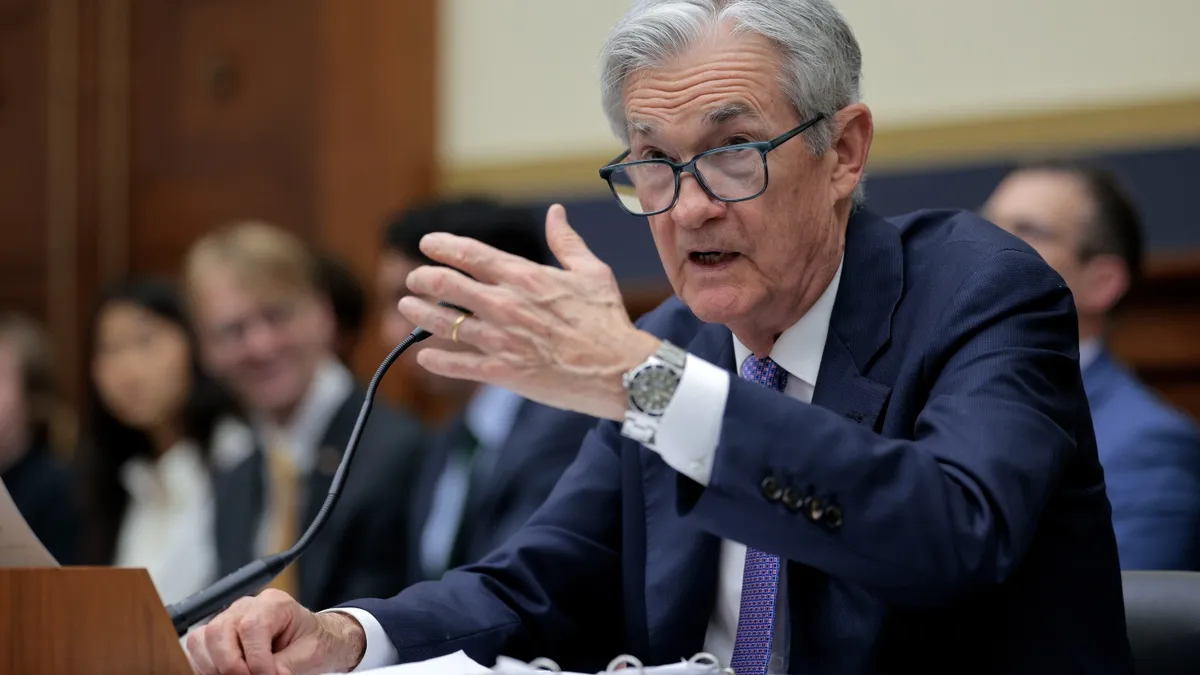
On Tuesday, Federal Reserve Chair Jerome Powell addressed the House Financial Services Committee, highlighting the significant impact of President Trump's tariffs on the U.S. economy. Powell stated that these tariffs create a highly uncertain path for economic growth, which justifies the Federal Reserve's cautious approach to interest rate adjustments. He noted, "We do expect to show up — tariff inflation to show up more," emphasizing the unpredictable nature of how these tariffs will ultimately affect consumer prices.
Powell expressed his concern regarding the extent to which tariff-related inflation will be passed on to consumers. "I want to be honest, we really don't know how much of that's going to be passed through to the consumers," he stated, indicating that the Federal Reserve is in a wait-and-see mode. The outcome could vary significantly; it might be lower or higher than anticipated, thus requiring patience from both policymakers and consumers.
Last week, the Fed decided to keep interest rates unchanged despite ongoing pressure from President Trump, who has been vocal in his desire for the central bank to implement faster interest rate cuts. The Fed's decision reflects a broader evaluation of the economy, where low employment, rising wages, and moderate economic growth were cited as factors for maintaining the current borrowing costs.
In his semi-annual report to Congress, Powell reiterated the Federal Reserve's stance, particularly when questioned about the pace of rate cuts compared to European central banks. "The reason we're not is the forecast," Powell responded, noting that most professional forecasters, both inside and outside the Fed, expect a significant rise in inflation throughout the year. This inflation forecast is crucial as it shapes the Federal Reserve's policy decisions moving forward.
Powell also addressed the current market dynamics, mentioning that many businesses are likely still managing inventories that were shipped before the tariffs took effect. He indicated that data from the summer months will provide clearer insights into the extent of consumer price increases as U.S. importers adjust to new costs.
Recently, President Trump has adjusted the levels of his global tariffs multiple times, currently pausing many of them as his administration negotiates individual deals with various countries. The Federal Reserve has maintained a steady course on interest rates since December, following a full percentage point cut last year.
During his address, Trump did not hold back, describing Powell as a "very dumb, hardheaded person," which underscores the ongoing tension between the White House and the Federal Reserve. Despite this, there appears to be some openness within the Fed to consider more rapid interest rate cuts. Following last week's meeting, Federal Reserve governors Christopher Waller and Michelle Bowman expressed their willingness to contemplate rate cuts as early as their next gathering in July.
The central bank's primary responsibilities include maintaining stable prices and ensuring maximum employment. As the economic landscape evolves, the Federal Reserve will continue to navigate the complexities introduced by tariffs and inflation, making data-driven decisions to foster a stable economic environment.